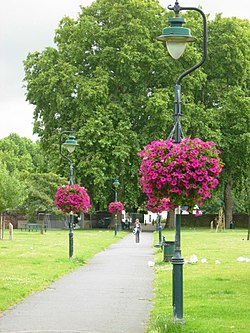| Geraldine Mary Harmsworth Park | |
|---|---|
 Geraldine Mary Harmsworth Park, July 2007. | |
| Type | Public |
| Location | Lambeth Road, London, SE1 |
| Coordinates | 51°29′46.23″N0°6′35.59″W / 51.4961750°N 0.1098861°W |
Geraldine Mary Harmsworth Park is a public park in Kennington, South London. Maintained by the London Borough of Southwark, it is bounded by Lambeth Road, Kennington Road, St George's Road and Brook Drive. [1] It covers an area of 5.9 hectares (15 acres). [2] The grounds of the park surround its central feature, the Imperial War Museum London. [3]


